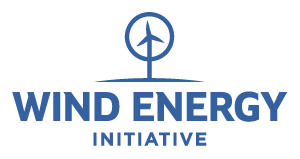Minnesota Wind Turbines
Taking advantage of the state’s wide-open prairie areas enables Minnesota to be on of the top 10 states for renewable wind energy generation in the country.
UNDERSTANDING THE MAP
Turbine capacity? Rotor diameter? Turbine height? What are these things and why are they important when looking at wind power?
Every electricity generating unit – from wind turbines and solar panels to nuclear and hydroelectric powerplants – has a nameplate that tells us what the maximum amount of electrical power that the facility is capable of producing to power our homes and businesses. Turbine capacity tells us how much power each wind turbine can generate. It’s important to note that the nameplate capacity is not how much will be generated because nothing can run every day of the year. According to Berkeley Lab’s Wind Energy Technology report, Colorado’s statewide average generating capacity was 33.3 percent.
But what determines a turbine’s capacity? That one is easy, rotor diameter and turbine height – and put simply bigger is usually better.
The rotor diameter is the full circle that a wind turbine’s blades cover with every rotation which generates electrical power. Longer blades lead to greater power production since wind is captured over a larger area.
Just as important as blade length is turbine height, which quite simply is how tall a wind turbine is. The higher the wind turbine blades can be placed in the sky, the steadier the wind will blow causing them to generate power, increasing the turbine capacity.

